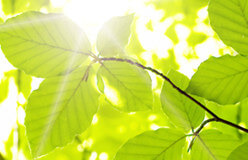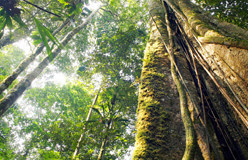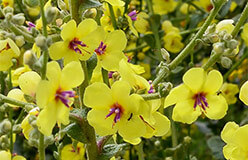Plants take in carbon dioxide from the air and give off oxygen.
Animals and people take in oxygen and give off carbon dioxide. The result is a natural balance that serves the needs of all living things. However, certain events upset the oxygen-carbon dioxide balance. One result could be global warming.







